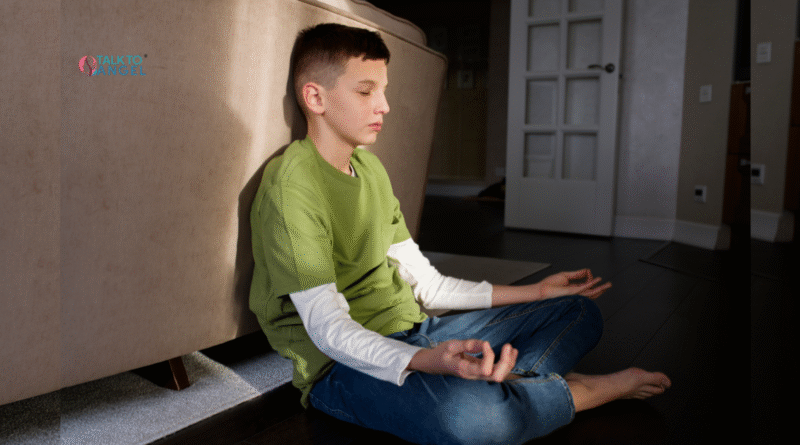Loneliness in the Age of Constant Connection
Loneliness has become an increasingly common experience in the modern world, affecting people across all ages and backgrounds. The introduction of the internet has unquestionably changed how we communicate, work, and live. With just a few taps on a screen, we can share moments, ideas, and emotions across continents, reconnect with old friends, and make new ones. Social media platforms, messaging apps, forums, and video calls have created an environment where we’re more digitally linked than at any other point in human history.
Many people nevertheless struggle with a profound sense of loneliness despite all of this internet engagement. Despite constant online engagement, people often feel emotionally distant and unfulfilled. Paradoxically, while technology offers more ways to connect, it can also amplify feelings of isolation. A growing number of individuals report feeling disconnected and emotionally detached from those around them, even while surrounded by virtual conversations and online networks.
This paradox—being constantly online but feeling deeply alone—raises important questions about the role of technology in our emotional lives. How can tools designed to bring us together end up making us feel more separated? Why does scrolling through endless photos, posts, and updates often leave us feeling inadequate or unseen?
The answer lies in the quality versus quantity of our digital interactions. While the internet facilitates quick exchanges and virtual presence, it often lacks the depth, vulnerability, and intimacy found in face-to-face communication. As a result, we may find ourselves substituting true connection for surface-level engagement, leaving our emotional needs unmet.
In this blog, we’ll explore how the internet contributes to feelings of loneliness, the psychological consequences of social isolation, and most importantly, what we can do to regain meaningful human connection in a world. Whether you’re feeling the silent weight of online loneliness or simply want to better understand this growing issue, this guide is for you.
The Illusion of Connection
The internet offers instant access to a vast network of people, yet many users report a deep sense of loneliness. There are several reasons for this phenomenon:
Superficial Interactions: Online conversations often lack depth, leading to relationships that don’t fulfill emotional needs.
Social Comparison: Feelings of loneliness and inadequacy might result from continuously being exposed to carefully chosen highlights of other people’s lives.
Reduced Face-to-Face Engagement: Time spent online often replaces in-person interactions, which are crucial for emotional bonding.
These elements contribute to a cycle where increased internet use leads to heightened feelings of loneliness, prompting further online engagement in search of connection.
Psychological Impacts of Digital Loneliness
The emotional toll of internet-induced loneliness is significant:
- Anxiety and Depression: The lack of meaningful social interactions can exacerbate mental health issues.
- Reduced Self-Esteem: Self-worth can be lowered by contrasting oneself with idealised internet personalities.
- Sleep Disturbances: Excessive screen time, especially before bed, can disrupt sleep patterns, further affecting mental health.
Understanding these impacts is the first step toward mitigating the negative effects of digital loneliness.
Strategies to Combat Online-Induced Loneliness
Addressing feelings of loneliness in the digital age requires intentional action:
- Limit Screen Time: Allocate specific periods for internet use to encourage offline activities.
- Engage in Offline Hobbies: Pursuing interests outside the digital realm can foster real-world connections.
- Seek Meaningful Interactions: Prioritize quality over quantity in online relationships, focusing on genuine conversations.
Implementing these strategies can help restore a sense of connection and well-being.
When to Seek Professional Help
It might be helpful to speak with a mental health professional if loneliness doesn’t go away despite attempts to connect. The following are indicators that someone needs support:
- Persistent Sadness: Ongoing feelings of emptiness or hopelessness.
- Withdrawal from Social Activities: Avoiding interactions, both online and offline.
- Changes in Appetite or Sleep: Notable shifts in eating or sleeping patterns.
Professional counselling can provide coping mechanisms and strategies to rebuild a sense of connection.
Conclusion
Even while the internet has transformed communication, it’s important to be aware of how it may exacerbate feelings of loneliness. People may use the digital world more thoughtfully if they are aware of the psychological effects and put methods in place to create real connections. Remember, seeking professional help is a proactive step toward emotional well-being in our increasingly connected world.
For those seeking assistance, TalktoAngel offers online counselling sessions with the best therapists in India, providing accessible support for individuals struggling with loneliness. Similarly, Psychowellness Center, recognised as the best mental health wellness clinic in Delhi, provides comprehensive mental health services, including online counselling and online therapy, to help individuals navigate the challenges of digital isolation.
References
- American Psychological Association. (2023). Loneliness and Social Media. Retrieved from https://www.apa.org/news/press/releases/stress/2023/loneliness-social-media
- Smith, A., & Duggan, M. (2013). Online Dating & Relationships. Pew Research Center. Retrieved from https://www.pewresearch.org/internet/2013/10/21/online-dating-relationships/
- Twenge, J. M., et al. (2018). Increases in depressive symptoms, suicide-related outcomes, and suicide rates among U.S. adolescents after 2010 and links to increased new media screen time. Clinical Psychological Science, 6(1), 3-17.
- Kuss, D. J., & Griffiths, M. D. (2015). Social Networking Sites and Addiction: Ten Lessons Learned. International Journal of Environmental Research and Public Health, 12(3), 1286-1306.




